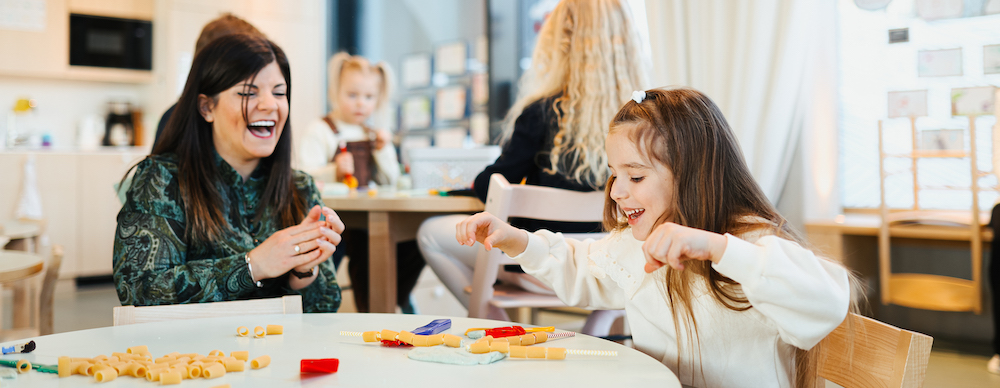
- Is the physical environment safe and comfortable?
- Is the environment a pleasant and aesthetically pleasing place to be?
- Are the teachers in the room welcoming, warm and calm?
- Do you feel at ease in this place?
How to create a good emotional learning environment?
Sensitive and familiar teachers
Teachers must be sensitive to children and learn their individual needs, communication styles, and personalities. The best scenario is that children, especially those who attend early childhood education, always have a familiar teacher near by. A familiar teacher makes children feel more comfortable, safe, and calm. Being around a trusted adult also helps children regulate their own emotions.
Clear and calm communication
From the beginning, teachers should talk to children, regardless of their age. It is good to explain to children what will happen during daily routines. For example, describe the things that you are doing, express your delight, talk about your surroundings, recite rhymes, or sing—the possibilities are endless! Even little babies like clear, steady talk as well as repeated words and routines so they learn what to expect.
Communication supports not only communication skills and language development but also the relationship with the child. If the child is very little and does not understand everything the teacher is saying, it does not matter. The main thing is that the child senses the teacher's emotions and mood.
Teaching emotional skills
The older children get, the more interested they become in other children. As children start to communicate and play together, emotions become highly important in the process of forming first friendships. It is important to teach children emotional skills, such as naming emotions, recognizing emotions, and talking about how different emotions feel. Teachers should also be prepared to support children in going through intense feelings that can arise from various situations.
Positivity and equality
Children are very attentive and observant. It is important that teachers, for example, greet all the children when they come to daycare and take every child into account equally. More outgoing, active, and social children may easily get more attention during the day, but quieter and 'easygoing' children also need the teacher's attention.
Teachers should treat all children equally and with respect, positivity, and kindness. All children deserve to hear appreciative and caring words.
Routines as Part of Emotional Bonding
When teachers value these moments of connection, everything starts to change. Let’s shift the mindset. Slow down and connect with the child.
Thousands of diapers are changed in early childhood education settings over the year, offering teachers thousands of opportunities to connect with the children. Care routines promote children's building of trust, interaction, and, later on, independence.
During care routines, teachers should take care of things gently. The way adults handle, touch and talk to the babies influences the children's self-esteem from early on. Diaper change is not just a chore to be completed - it is a great 1:1 time with the little one.
Happy learning!
.png)
.png)